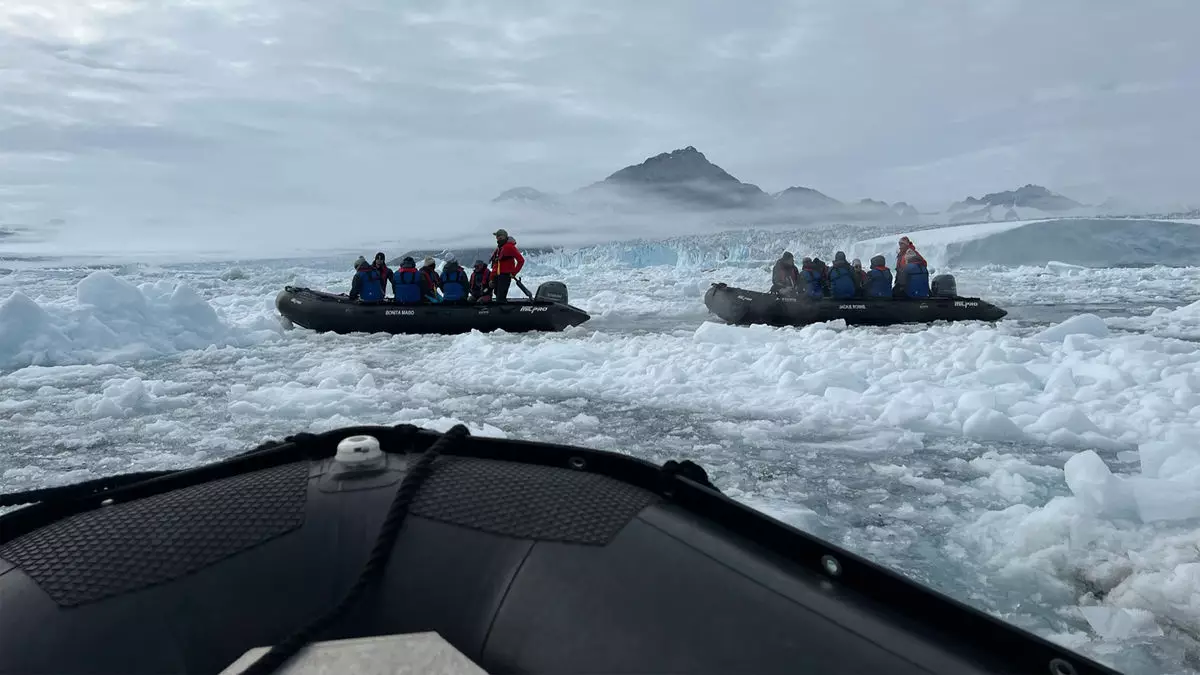Embarking on an expedition sailing trip to the Arctic Circle is an experience like no other. The thrill of exploring the icy landscapes, observing wildlife in their natural habitat, and navigating through dramatic coastlines is truly a once-in-a-lifetime adventure. My recent two-week voyage on the Sylvia Earle, one of Aurora Expeditions’ new ships, opened my eyes to the wonders of the Arctic and the importance of experience and ship size in such expeditions.
One of the most memorable moments of my Arctic expedition was an impromptu stop in Jan Mayen, a picturesque island in the Arctic Ocean. This stop, facilitated by expedition leader Howard Whelan’s connection with the commander of a small Norwegian military base on the island, turned out to be a stroke of luck. As the ice jam along the eastern coast of Greenland hindered our progress, the stop in Jan Mayen allowed us to explore the rugged coastline and majestic cliffs of this remote island. Little did we know that this stop would also enable us to bypass the customs clearance in Greenland and freely explore its remote regions while other ships were stranded off the coast.
The combined experience of the expedition team, led by Howard Whelan, and the captain of the Sylvia Earle was evident as they navigated through the icy waters of the Arctic. Their careful planning and expertise allowed us to discover hidden gems like the island of Norder Aputiteq, where we stumbled upon the ruins of an abandoned Inuit dwelling. This experience highlighted the importance of experience and size in expedition sailing, as the Sylvia Earle’s small size enabled us to access rarely explored beaches and coastlines that larger ships couldn’t reach.
In recent years, there has been a surge of new players entering the expedition cruise market, with ships larger than the Sylvia Earle. However, traditional operators like Aurora Expeditions, Albatros Expeditions, and Quark have maintained their focus on experience and ecofriendliness. These operators offer purpose-built ships with modern amenities like spacious cabins, gourmet dining, and wellness facilities, catering to the needs of adventure-seeking travelers. Aurora’s upcoming launch of the Douglas Mawson, a smaller ship designed for polar cruises, underscores the shift towards smaller, more sustainable expedition vessels.
As regulations for expedition cruises in the Arctic tighten, the importance of ship size has become more apparent. Beginning in January 1, only ships carrying 200 or fewer passengers will be allowed to land in select spots within national parks and protected areas in Svalbard. This regulation emphasizes the need for smaller, more environmentally friendly ships like the Douglas Mawson, which will offer a unique and immersive Arctic expedition experience to solo travelers and nature enthusiasts alike.
My journey on the Sylvia Earle with Aurora Expeditions was a testament to the magic of expedition sailing in the Arctic Circle. From fortuitous stops in remote islands to the thrill of exploring uncharted territories, every moment was a reminder of the importance of experience, expertise, and ship size in creating unforgettable expedition experiences. As the Arctic expedition cruise industry continues to evolve, it is clear that smaller, more sustainable ships like the Sylvia Earle and the upcoming Douglas Mawson will play a crucial role in shaping the future of Arctic exploration.


Leave a Reply